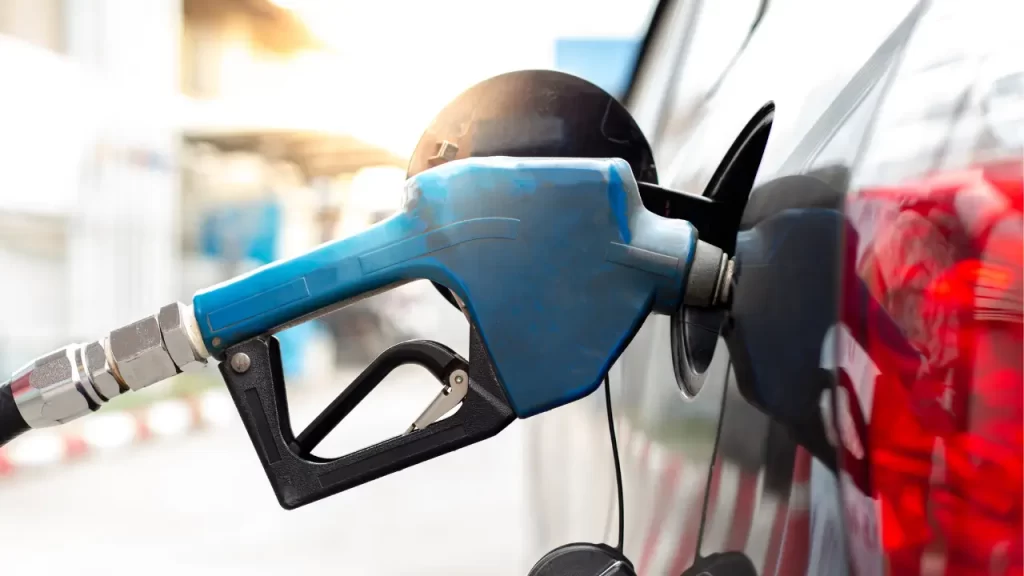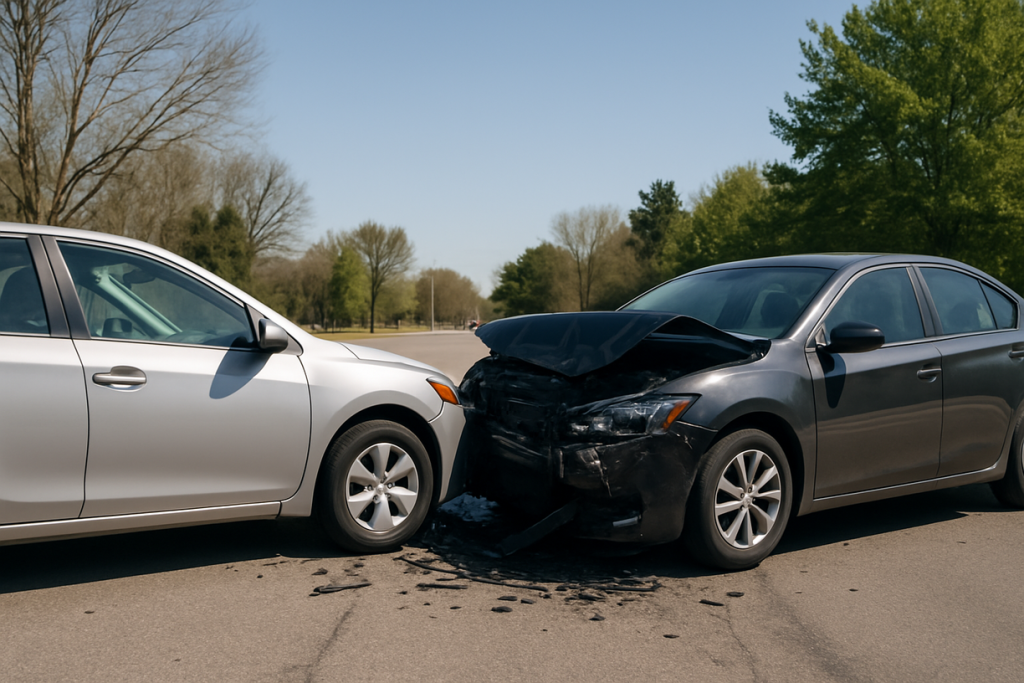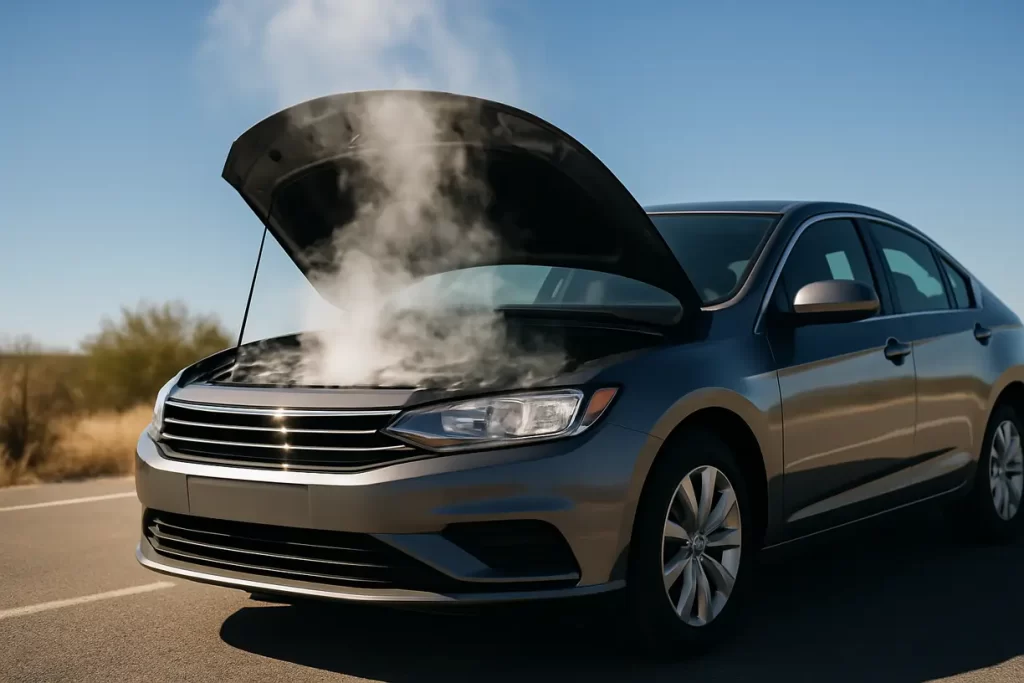Introduction
Picture this: You suddenly need to brake hard due to a downpour, and the car responds with the wheels gripping the road without locking. This is what ABS—the Anti-lock Braking System—does for drivers every day. It’s not only another dashboard light or a technical acronym; it is a lifesaver that will still continue working without your notice, keeping you in control when conditions become dangerous. Knowing the ways ABS works and the reasons why it is important can be the difference between a near accident and a crash. For those who are driving, having knowledge of your car’s safety features is not only wise, it is a must. Since ABS has become a standard feature on most vehicles, it is high time to get acquainted with the way this system assists you in being safe.
What Is ABS?
ABS, which stands for Anti-lock Braking System, is a safety feature that has been designed to stop your car’s wheels from locking up during a very hard brake. The system rapidly pulses the brakes instead of sliding skids uncontrollably, thus allowing you to steer even in panic stops. The system is a safety feature that was originally developed to make driving safer, and it is now the standard feature on most modern cars. It is not only a great technological innovation but also a lifesaver, as it reduces skidding and enables drivers to manoeuvre around obstacles when it is most needed. The technology depends on sensors, a controller, and a hydraulic pump, and these three are working in harmony to ensure that you have complete control. No matter if you are going through slippery roads or you are faced with sudden emergencies, ABS will be there for you, albeit silently, to ensure you are safe behind the wheel.
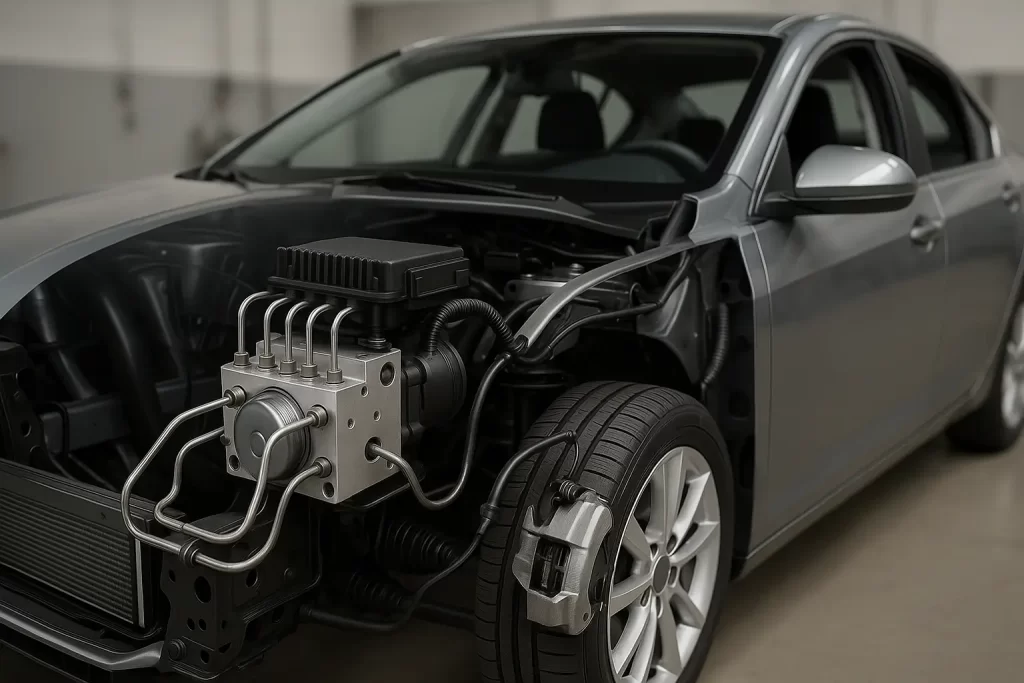
How Does ABS Work?
Imagine that you were driving and had to slam on the brakes really hard on a wet and slippery road. If your car didn’t have ABS, your wheels could have locked, basically skidding the car out of control. The anti-lock braking system definitely has its place in such situations. Sensors located on the wheels measure their speed all the time. When one of them is going slower or faster than it should be—this is the signal of a possible lock-up—the ABS controller takes the lead without delay. It gives the signal to that wheel to release the brake, then it quickly repeats this process of turning the brake on and off at short intervals. This alternating allows the wheel to continue rotating, so you don’t lose grip and control over the steering even in an emergency stop.
A pump that is operated by the liquid (the hydraulic fluid) and a set of valves performs the work without you seeing it, following the controller’s instructions. The brakes are not applied continuously but in intervals, several tens of times per second. Thus, at the same time as the brakes are released, the steering and braking are not compromised. The driver may notice it as a vibration or a pulsing sensation in the brake pedal during hard braking. Current systems allow each wheel individually to adjust the force more precisely. Although ABS may not reduce the braking distance, it definitely can give you a chance to avoid the accident, as it allows you to steer your car in the direction you want—even on a slippery road.
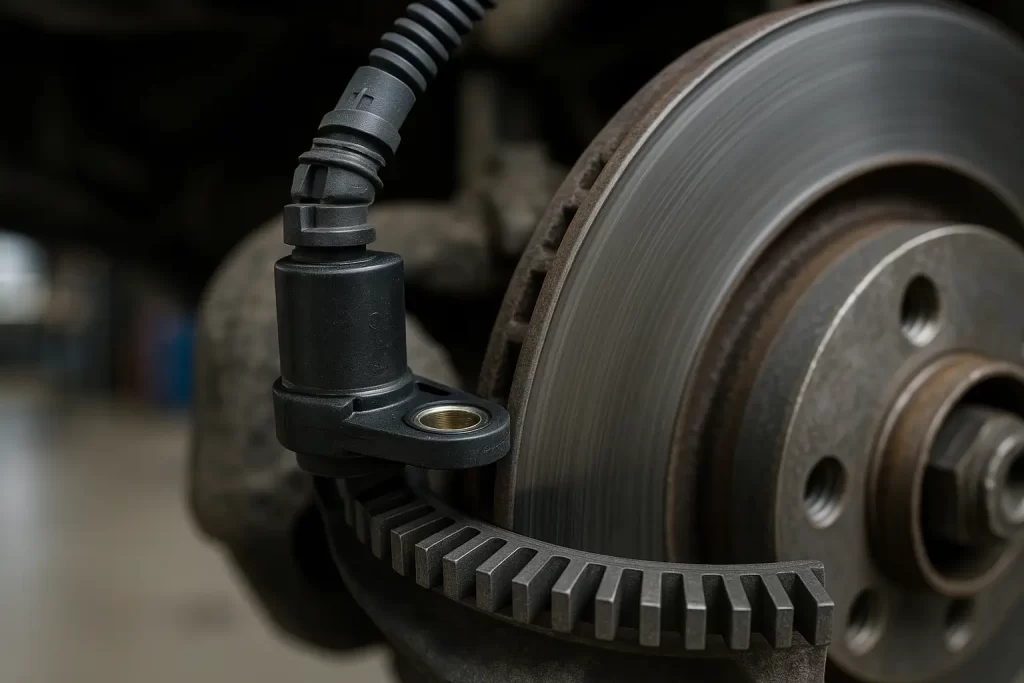
Why Is ABS Important?
Have you ever been in a situation where you had to quickly turn away from a deer or use the brakes to the maximum because a car came abruptly in front? That’s a moment when ABS is at its best. Rather than your wheels locking and making you lose control, the system allows their rotation—just enough for you to change the direction and get out of the danger. If the road is slippery or there is black ice, ABS can be the reason that you get away with only a scare instead of getting into an accident. Research is in the same direction: the vehicles equipped with ABS have fewer accidents, also in the case of multiple vehicles, pedestrians, or cyclists being involved. The numbers are striking—some research suggests ABS can reduce fatal pedestrian crashes by as much as 27%.
On the other hand, a key component of ABS is not being able to stop sooner but being able to maintain control. Even if your stopping distance doesn’t improve on certain surfaces, you’re much safer because you are not likely to lose the grip and spin. In case an emergency arises and the driver panics, ABS is like a lifeline that provides time to react and fix the mistake. Today, cars are almost always equipped with ABS, and this is because of the following reasons: it has been proved to be life-saving, to lessen the injuries, and to be able to make the road safer for all of us.
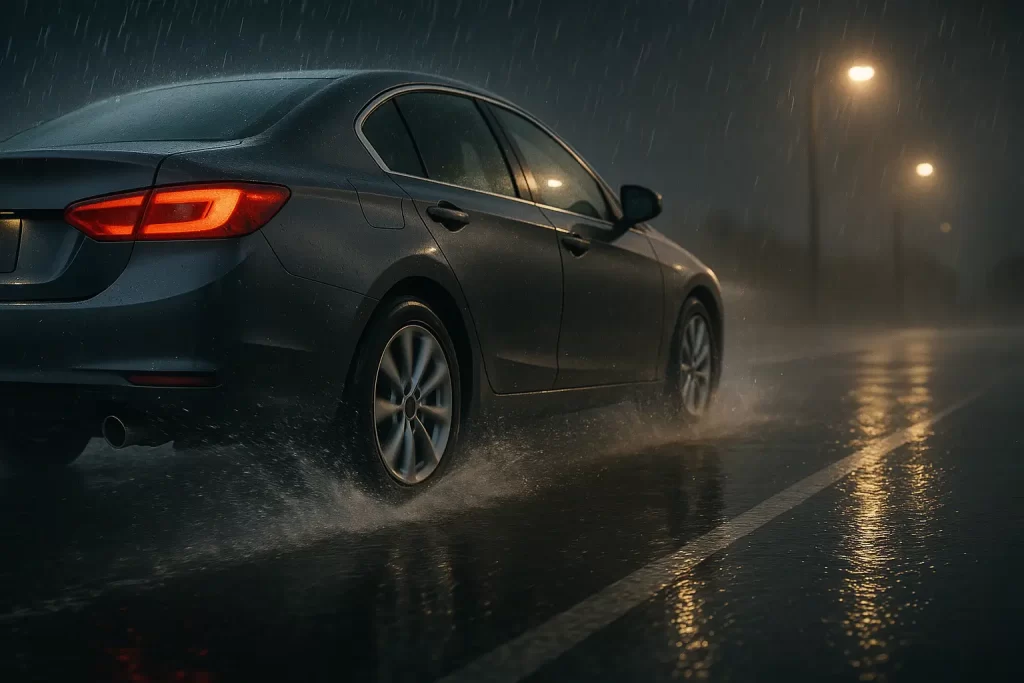
ABS Warning Light: What Does It Mean?
ABS warning light flashing? Well, don’t get yourself into a frenzy, but also don’t be indifferent to it. That little icon on your dash indicates your car’s anti-lock braking system may not be working efficiently. Usually, the dirty or faulty sensors, lack of proper wiring, or short in the ABS controller are the main reasons. The light will be on, but driving is still possible; however, your vehicle won’t be able to provide the same level of safety in case of unexpected braking. Just think about a situation when you are skidding on a wet surface without ABS—at once, steering becomes a lot harder when you need it most. In case the light continues to stay on, it will be a good idea to have your car checked by a professional. Checking the fault quickly can prevent a deeper problem that can hurt you later. At times, something as simple as sensor cleaning or fixing the loose connection can solve the problem. Still, if you take it lightly, you could endanger your own life and that of others.
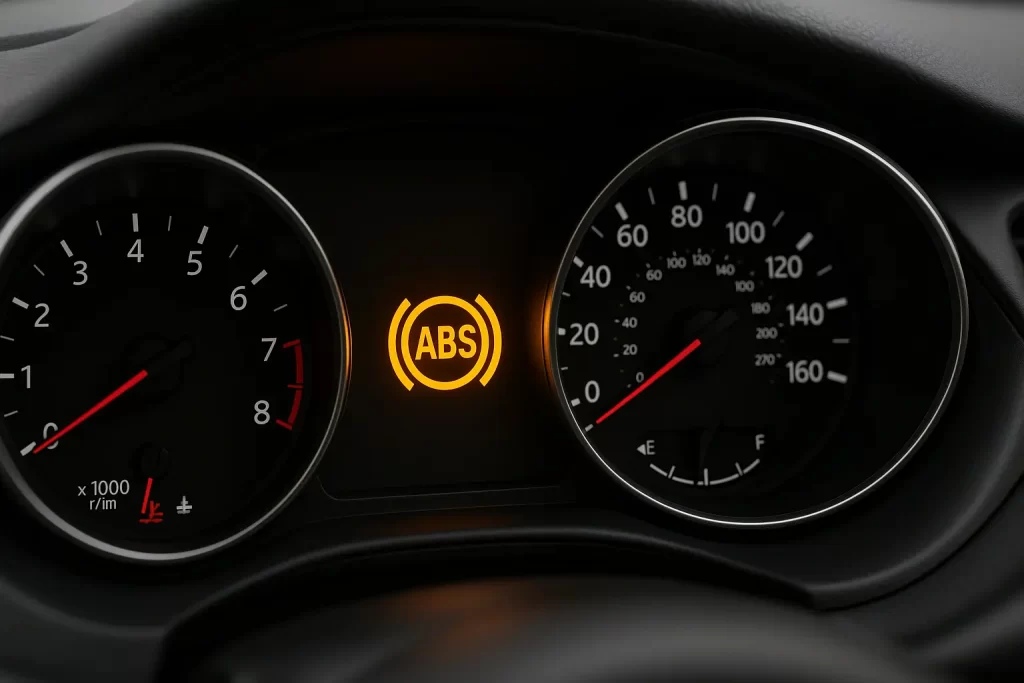
Maintenance and Troubleshooting
Maintaining your ABS in good condition is not only about safety—it is also about reassurance. First, check the brake pads and rotors regularly, because worn brakes will make the ABS work harder. Also, remember the brake fluid; if it is old or not enough, the system may be over-pressurised, and thus the warning lights may be activated. The wheel speed sensors are important part of the system as well—periodic cleaning with a soft cloth will prevent them from giving false alarms. If the ABS light is still on, don’t ignore it. Usually, it’s no more than a sensor that needs cleaning or a fuse that needs changing, but if the situation is not going away, then take it to a mechanic. Abrupt braking will cause the system to be under more pressure, so try to brake gently. Besides, a simple ABS check after the change of the season can be a good idea since the roads might be slippery. Regular professional inspections catch issues before they become big headaches.
Common Myths and Facts About ABS
Let’s go through some myths one by one: ABS is not always the one that decides shorter stopping distances—it even might cause that on some occasions, and, in fact, on loose gravel or deep snow, it definitely can extend them. A few words about what the ABS really is: it is the system that, together with braking, ensures that the driver has the opportunity to maintain the steering during braking, which is a very important feature in cases of emergency.
Incorrectly, many drivers are convinced that when the ABS system activates, they should pump the brakes, but this is an old habit that is no longer true. The notion that the hydraulics (ABS) work as if it is the same on all surfaces is another fiction. Actually, it is most efficient when road conditions are just wet or slippery; it is the opposite for loose materials such as gravel. Some people assume that if ABS is there, it compensates for their reckless driving; however, it is a safety aid that helps, not a shield that deflects all danger. The conclusion is that the ABS is the system that reduces the danger of skids and helps you stay in control, but it cannot replace safe driving practices.
Conclusion
ABS is not just a mere device—it is a dependable companion every single time you go for a drive. Understanding its operation and maintaining it in good condition makes your car a safer vehicle for both you and other road users. Keep yourself informed about your car’s safety features, and don’t rely on the warning lights to signal you. Consistent inspections and cautious driving can be really effective. So much so, your mind’s at rest while driving begins with knowing the safety features.
